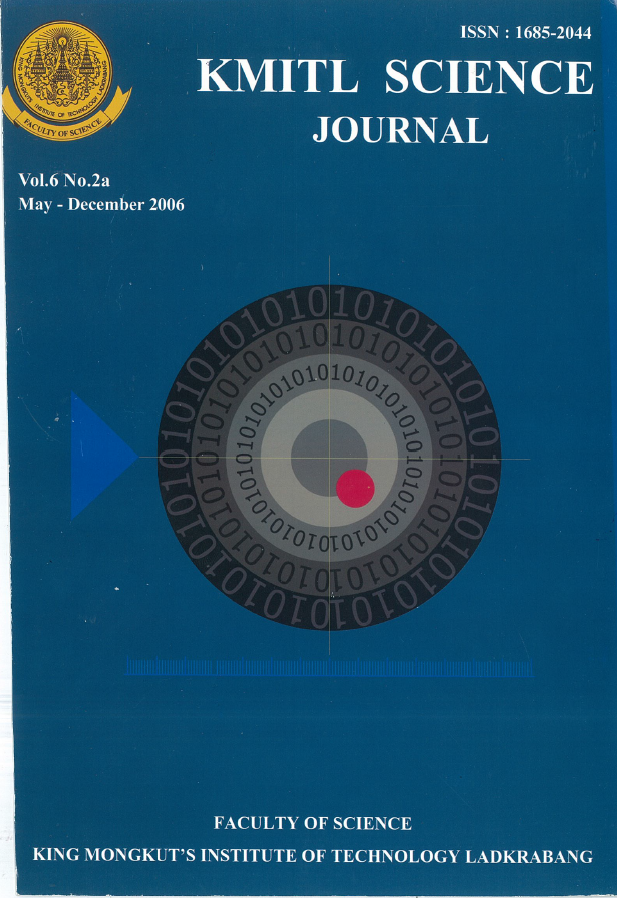An Application of Discriminant Analysis in Classification of Financial Distress of Non-Life Insurance Companies
Main Article Content
Abstract
The purpose of this research is to study factors affecting financial distress of Non-life Insurance Companies and classify their financial distress into solvent and insolvent insurers using discriminant analysis. The validity of the proposed model is measured by the accuracy rate of classifications. The model gives 88.30% correctly classified with 6.38% type I error and 14.44% type II error. Hence, it can be claimed that the model performs reasonable well in classifying financial distress.
Keywords: Discriminant Analysis, Insolvent Insurer and Solvent Insurer, Financial Distress, Fisher’s Linear Discriminant Analysis, Stepwise Procedures.
Corresponding author: E-mail: rat_kmitl@yahoo.com and walailak_ut@yahoo.com
Article Details
Copyright Transfer Statement
The copyright of this article is transferred to Current Applied Science and Technology journal with effect if and when the article is accepted for publication. The copyright transfer covers the exclusive right to reproduce and distribute the article, including reprints, translations, photographic reproductions, electronic form (offline, online) or any other reproductions of similar nature.
The author warrants that this contribution is original and that he/she has full power to make this grant. The author signs for and accepts responsibility for releasing this material on behalf of any and all co-authors.
Here is the link for download: Copyright transfer form.pdf
References
[2] Altman, E.I. and Vanderhoof, I. 1995 The Financial Dynamics of The Insurance Industry. New York, IRWIN Professional.
[3] Bajgier, S.M. and Hill, A.V. 1968 An experimental comparison of statistical and linear programming approaches to the discriminant problem, Decision Sciences, 13, 604-618.
[4] Pinches, G.E. and Trieschmann, J.S. 1974 Efficiency of Alternative Models for Solvency Sureillance in the Insurance Industry, Journal of Risk and Insurance, 41, 563-577.
[5] BarNiv, R. and Hershbarger, R.A. 1990 Classifying Financial Distress in the Life Insurance Industry, Journal of Risk and Insurance, 59, 110-136.
[6] Richard, J. and Dean, W. 2002 Applied Multivariate Statistical Analysis. New Jersey, Pearson Education.
[7] www.http://fie.engrng.pitt.edu/fie96/papers/141.pdf
[8] Barbara, G. and Linda, S. 1996 Using Multivariate Sattistics. California, Pearson Education.
[9] Michael, C. 2004 Pegnato Revisited: Using Discriminant Analysis to Identify Gifted Children, Psychology Science, 46, 342-347.


